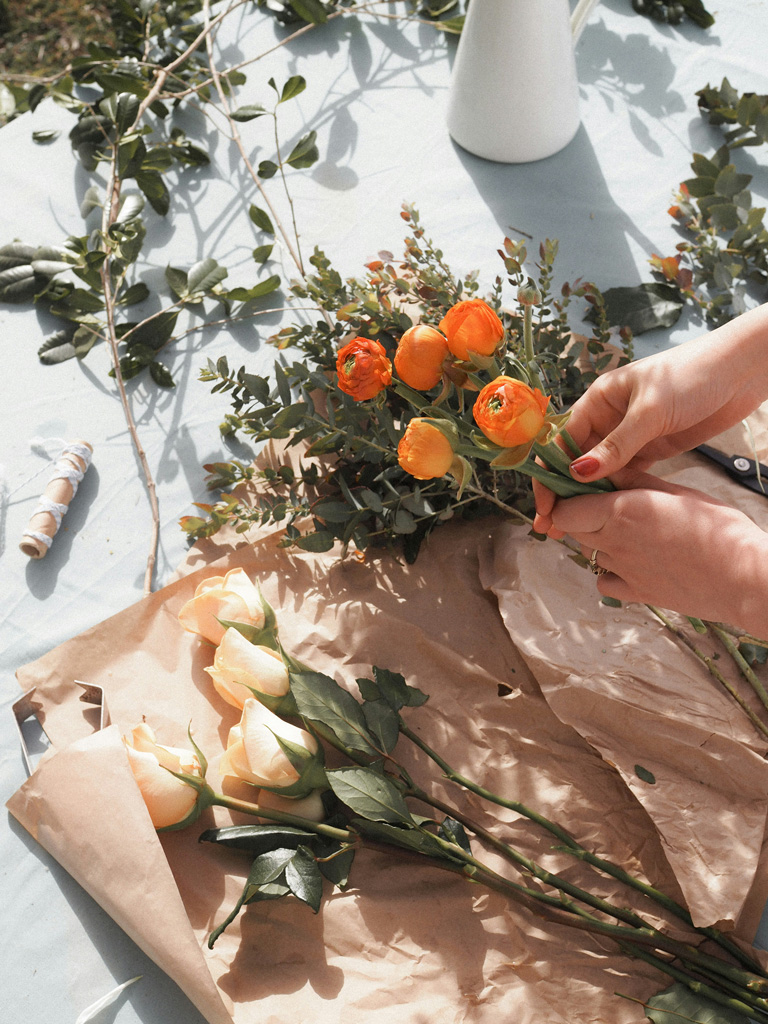Starting your floristry journey can feel overwhelming, especially when faced with the seemingly endless array of tools and equipment available. Understanding which tools are truly essential versus those that are nice-to-have can save you hundreds of dollars and help you build a functional workspace that supports your learning and growth. Whether you’re just beginning your floristry education or preparing to launch your professional career, this comprehensive guide will help you build the perfect toolkit for your needs and budget.
Understanding Tool Categories
Basic Tools for Beginners
Every aspiring florist needs these fundamental tools to get started:
Cutting Tools:
- Sharp floral scissors or snips (6-8 inches)
- Utility knife or craft knife
- Pruning shears for woody stems
Conditioning Tools:
- Stem stripper or thorns stripper
- Floral foam knife
- Spray bottle for misting
Construction Tools:
- Floral wire (various gauges: 20, 22, 24, 26)
- Floral tape (green and white)
- Floral pins and picks
Measuring and Design Tools:
- Measuring tape or ruler
- Floral foam (wet and dry)
- Basic vases and containers
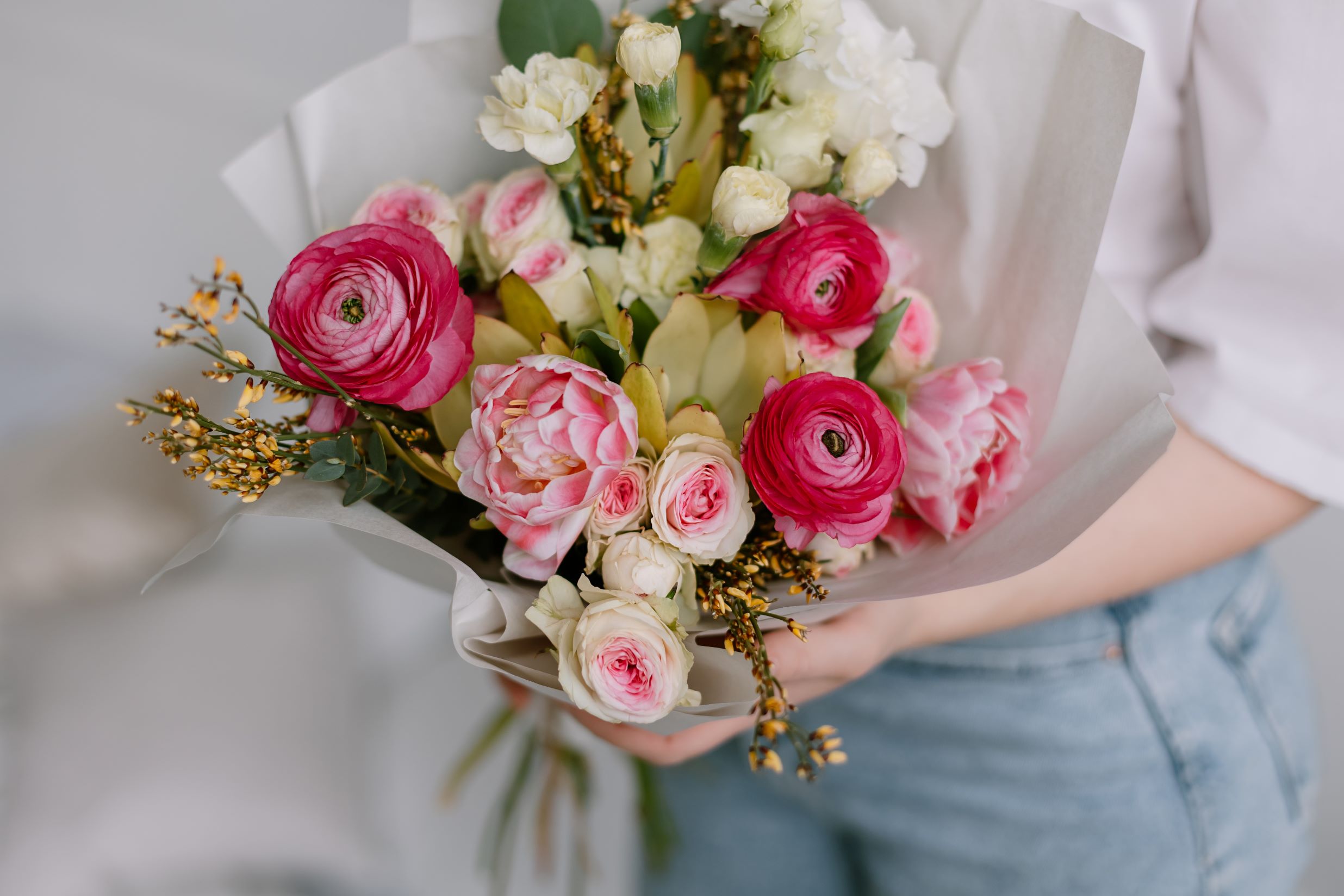
Professional-Grade Equipment
As you advance in your floristry skills, these tools become increasingly valuable:
Advanced Cutting Tools:
- Professional Japanese floral scissors (premium steel)
- Curved floral scissors for detailed work
- Stem cutter for bulk processing
Specialized Construction Tools:
- Wire cutters and needle-nose pliers
- Glue gun and floral adhesive
- Staple gun for installations
- Floral tubes and picks
Design and Finishing Tools:
- Floral foam cages and shapes
- Ribbon and fabric selection
- Corsage pins and pearl-headed pins
- Floral preservatives and conditioners
Essential Cutting Tools: Your Most Important Investment
Floral Scissors: The Foundation of Your Kit
Quality floral scissors are your most important tool investment. Look for:
- Blade Material: Stainless steel or carbon steel for durability
- Blade Length: 6-8 inches for versatility
- Ergonomic Handles: Comfortable grip for extended use
- Sharp Point: Essential for precise cuts and detail work
Budget-Friendly Options ($20-50):
- Fiskars floral scissors
- Generic stainless steel floral snips
- Basic craft store options
Professional Options ($80-200):
- Japanese steel floral scissors
- German-made professional shears
- Brand-name florist scissors with lifetime sharpening
Utility Knives and Specialty Cutters
A sharp utility knife is essential for:
- Cutting floral foam to size
- Trimming stems at sharp angles
- Creating clean edges on arrangements
- Emergency repairs and adjustments
Pruning Shears for Woody Stems
Heavy-duty pruning shears handle:
- Thick branches and woody stems
- Dense foliage removal
- Cutting through tough plant material
- Preparing materials for arrangements
Wire and Tape: The Building Blocks
Understanding Floral Wire Gauges
Different wire gauges serve different purposes:
Heavy Wire (16-18 gauge):
- Structural support for large arrangements
- Creating armatures and frameworks
- Supporting heavy flowers and foliage
Medium Wire (20-22 gauge):
- General floral work and support
- Corsages and boutonnieres
- Moderate stem reinforcement
Fine Wire (24-26 gauge):
- Delicate work and detail
- Attaching small elements
- Hair accessories and fine details
Floral Tape Applications
Floral tape serves multiple purposes:
- Securing wire to stems
- Creating natural-looking stem coverings
- Binding elements together
- Weatherproofing connections
Color Selection:
- Green tape for natural stem appearance
- White tape for bridal work
- Brown tape for natural, rustic looks
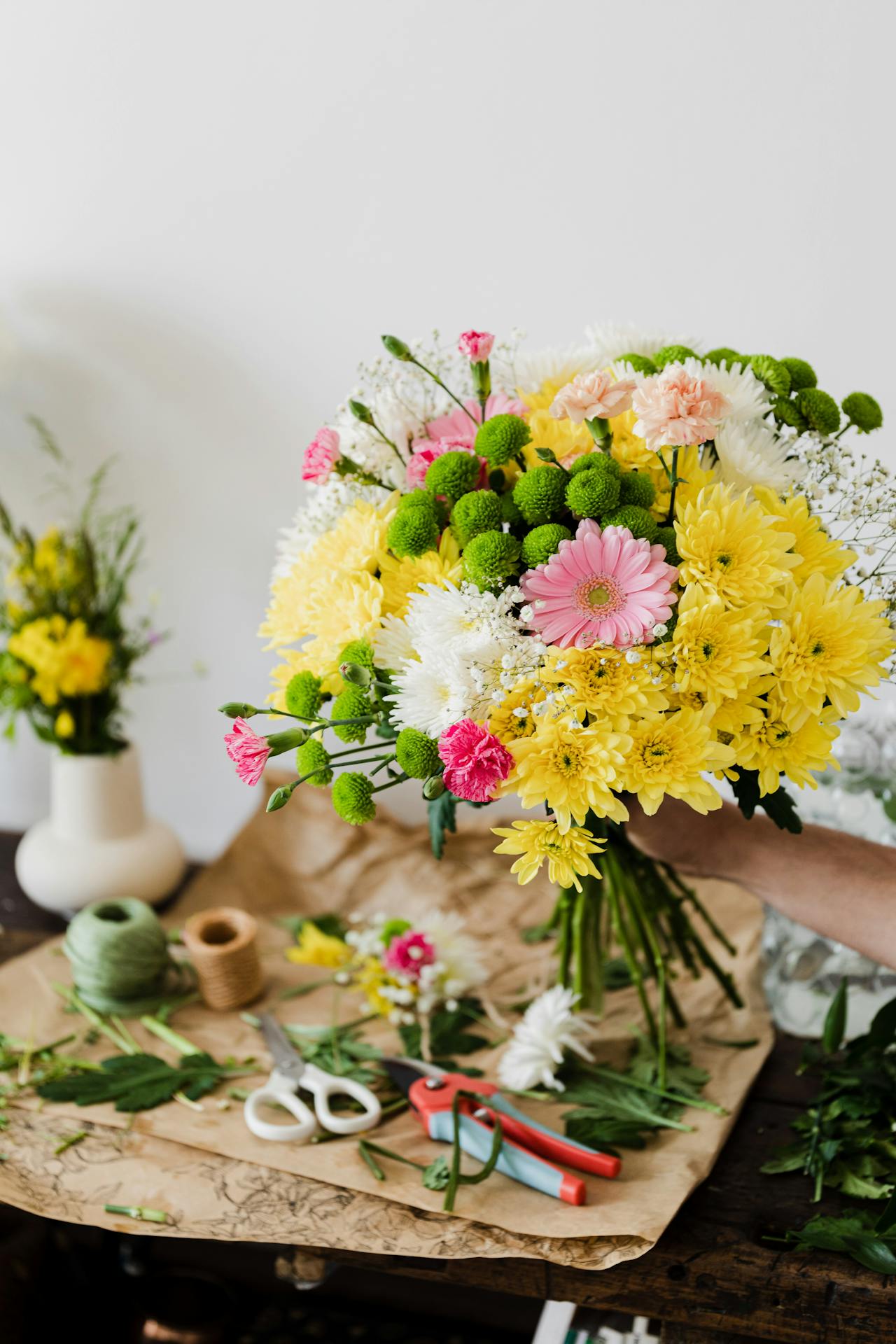
Conditioning and Care Tools
Proper Stem Preparation
Stem Strippers:
- Remove thorns safely and efficiently
- Clean stems for better water uptake
- Create smooth surfaces for handling
Floral Foam Knives:
- Cut foam to precise shapes
- Create clean, professional edges
- Prevent foam crumbling and waste
Hydration and Preservation
Spray Bottles:
- Mist delicate flowers and foliage
- Maintain humidity during work
- Apply floral preservatives evenly
Floral Preservatives:
- Extend flower life significantly
- Prevent bacterial growth
- Maintain vibrant colors longer
Containers and Foundation Materials
Vases and Vessels
Build a collection of versatile containers:
Basic Shapes:
- Cylinder vases (various heights)
- Bowl-shaped containers
- Bud vases for small arrangements
Materials:
- Glass for classic arrangements
- Ceramic for textured looks
- Metal for modern designs
Floral Foam and Alternatives
Wet Floral Foam:
- Provides water source for arrangements
- Holds stems securely in place
- Available in various shapes and sizes
Dry Floral Foam:
- For dried flower arrangements
- Silk flower displays
- Permanent installations
Eco-Friendly Alternatives:
- Chicken wire for natural support
- Floral frogs and pin holders
- Moss and natural materials
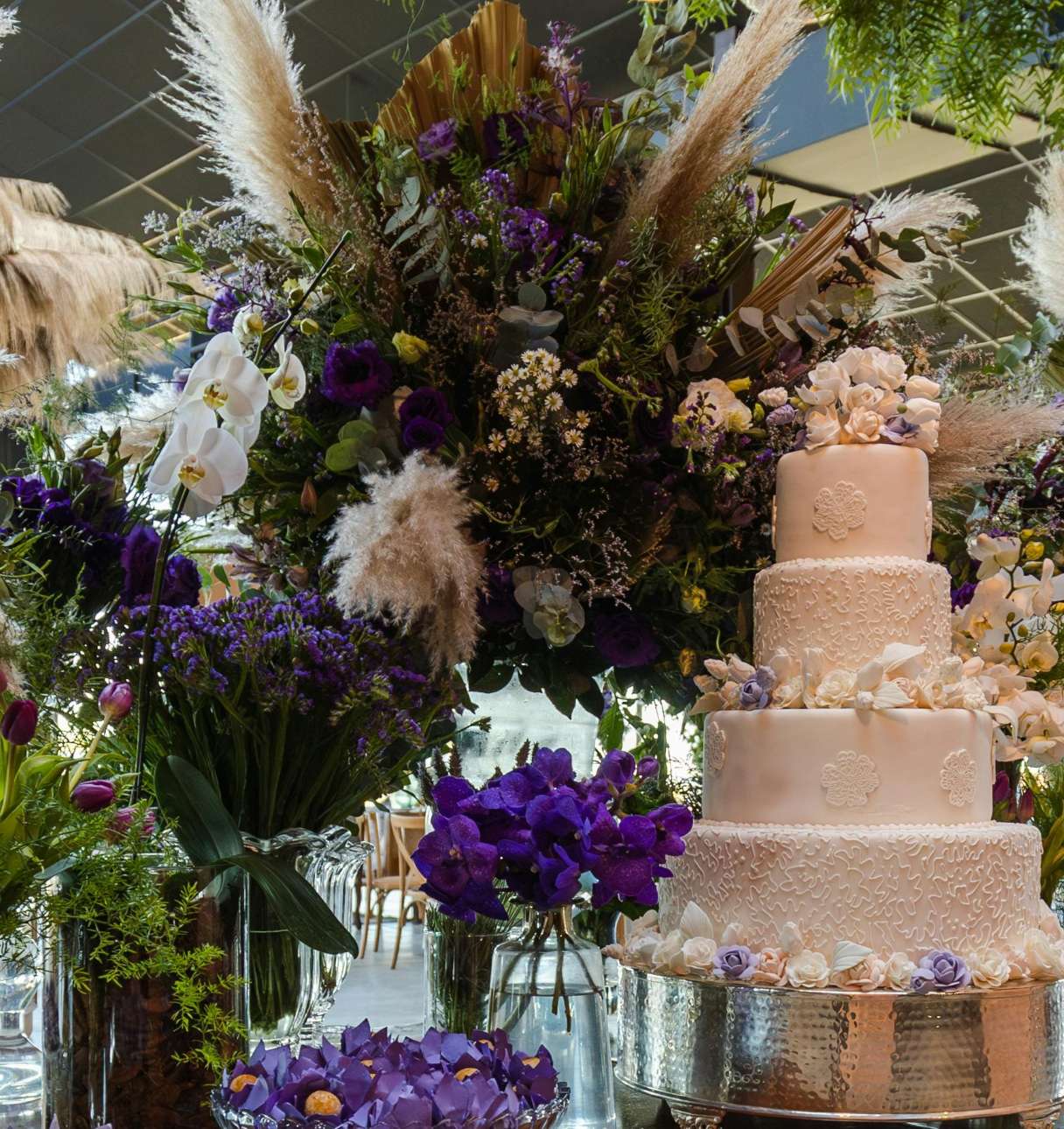
Measuring and Design Tools
Precision Instruments
Measuring Tools:
- Flexible measuring tape for curves
- Rulers for straight measurements
- Calipers for precise spacing
Design Aids:
- Color wheels for harmony planning
- Proportion guides for balanced designs
- Sketch pads for concept development
Budget-Friendly Alternatives
Smart Shopping Strategies
Generic vs. Brand Names:
- Many basic tools perform equally well in generic versions
- Invest in quality for frequently used items
- Save money on tools used occasionally
Multi-Purpose Tools:
- Choose tools that serve multiple functions
- Avoid highly specialized tools until needed
- Build your collection gradually
DIY Solutions
Homemade Alternatives:
- Use household scissors for occasional cutting
- Repurpose kitchen utensils for measuring
- Create your own spray bottles and containers
Craft Store Finds:
- Many craft stores carry floral supplies
- Look for sales and bulk purchasing options
- Consider student discounts where available
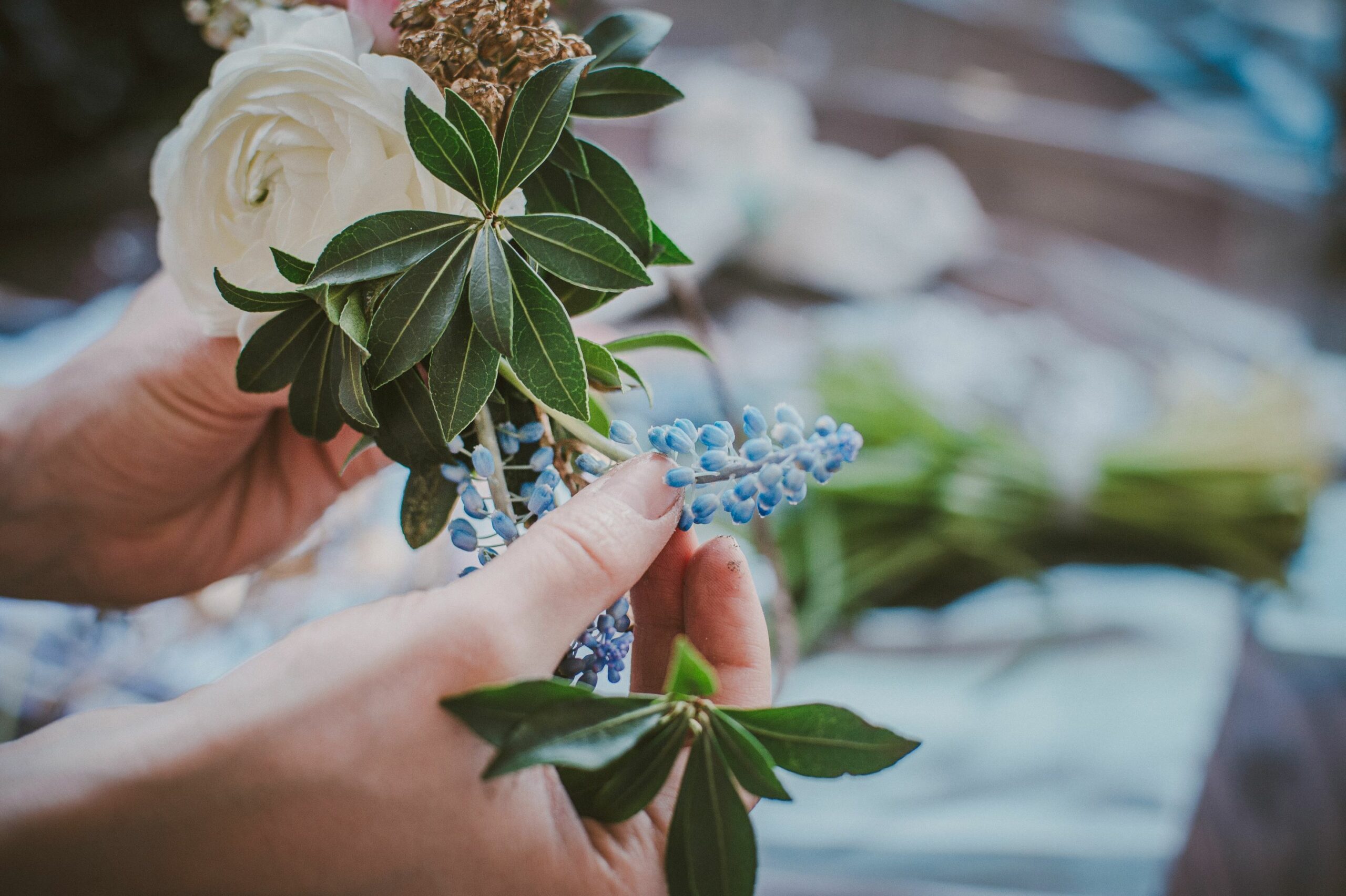
Where to Source Quality Tools
Professional Suppliers
Wholesale Florist Suppliers:
- Best prices for professional-grade tools
- Bulk purchasing opportunities
- Industry-standard quality
Online Retailers:
- Convenient shopping and comparison
- Customer reviews and ratings
- Wide selection and competitive pricing
Local Options
Craft and Hobby Stores:
- Immediate availability
- Hands-on tool evaluation
- Local support and returns
Garden Centers:
- Quality cutting tools and containers
- Seasonal sales and clearances
- Expert advice from staff
Tool Care and Maintenance
Keeping Your Tools Sharp
Regular Maintenance:
- Clean tools after each use
- Oil moving parts regularly
- Store in dry, organized spaces
Sharpening Services:
- Professional sharpening for expensive tools
- DIY sharpening for basic equipment
- Know when to replace versus repair
Organization and Storage
Tool Organization:
- Use tool rolls or cases for portability
- Create dedicated workspace storage
- Keep frequently used tools easily accessible
Inventory Management:
- Track tool condition and replacement needs
- Maintain backup tools for essential items
- Budget for tool upgrades and replacements
What’s Covered in Professional Courses
Course-Provided Tools
Most comprehensive floristry courses provide:
- Basic cutting tools for in-class use
- Floral foam and construction materials
- Wire, tape, and pins for projects
- Containers and vases for practice
Tools You’ll Need to Purchase
Students typically need to buy:
- Personal cutting tools for home practice
- Additional practice materials
- Specialized tools for advanced techniques
- Professional-grade equipment for career use
Building Your Collection Over Time
Beginner’s First Purchase ($100-200)
Start with these essentials:
- Quality floral scissors
- Basic wire assortment
- Floral tape (green and white)
- Spray bottle and utility knife
- Small selection of practice containers
Intermediate Expansion ($200-500)
Add these tools as you progress:
- Professional-grade cutting tools
- Expanded wire and tape selection
- Floral foam and construction materials
- Specialized tools for your preferred techniques
Professional Investment ($500+)
Complete your toolkit with:
- Premium cutting tools with lifetime warranties
- Comprehensive tool organization systems
- Specialized equipment for your chosen specialty
- Backup tools for professional reliability
Making Smart Tool Investments
Quality vs. Price Considerations
Invest in Quality for:
- Tools used daily (scissors, wire cutters)
- Safety-critical equipment
- Items requiring precision
- Tools that affect work quality
Save Money on:
- Rarely used specialized tools
- Items that wear out quickly regardless of quality
- Tools you’re still learning to use properly
Testing Before Buying
Try Before You Buy:
- Borrow tools from friends or colleagues
- Test different brands during courses
- Attend trade shows for hands-on evaluation
- Read reviews and seek recommendations
Conclusion
Building your floristry toolkit is a gradual process that should align with your skill development and career goals. Start with quality basics, invest in tools that you’ll use frequently, and expand your collection as your expertise grows. Remember that the most expensive tools won’t automatically make you a better florist – practice, education, and creativity are your most valuable assets.
Focus on learning proper techniques with basic tools before upgrading to premium equipment. Many successful florists began with modest toolkits and built their collections over years of professional growth. The key is choosing tools that support your learning, inspire your creativity, and help you achieve professional results.
Whether you’re just starting your floristry education or preparing to launch your career, a well-chosen toolkit will serve as the foundation for your success. Take time to research your options, set a realistic budget, and invest in quality tools that will grow with you throughout your floristry journey.
